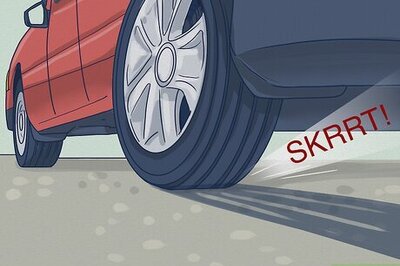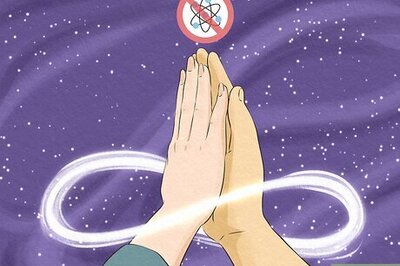
views
Vikram* isn’t just any five-year-old. According to his father Nathan*, he is the loudest, sweetest and most effervescent little boy that he has ever seen.But for a little difficulty in getting to his feet, the chirpy little lad seems no different from any other. “Water thanni,” he says cheerfully to his mother and points to the water dispenser. She obliges and watches as he drinks out of the glass.While this could happen in any average family, there is but one big difference here. “Till eight months ago, Vikram couldn’t stand or walk. He couldn’t speak words and was confined to communicating with noises and signs,” recalls Nathan, rather sadly but adds, “What happened, in my opinion, is a miracle.” Depressed after getting advice from his relatives and friends to put him in a special school because of his delayed mental and physical development, Nathan took a bold move. Though his son had mild symptoms of cerebral palsy, he searched the Internet for doctors who used stem cell therapy for neuro-degenerative disorders. “A news item popped up online about Dr Bansal who had cured an NRI, who had lost his sight, using stem cells. I saw it as a sign and contacted him,” says Nathan. Little did he realise then how much that one e-mail would change their lives.Says Dr Himanshu Bansal, a scientist of spinal cord neuro-degenerative disorders and stem cell research with REVITA Stem Cell Research, who decided to take on the case, “Vikram’s parents had noticed that all the milestones achieved by their son were grossly delayed with motor mental retardation and severely slowed intellectual activity.” Apparently Vikram also had negligible speech, learning disabilities and a skeletal age of 1-2 years. Medically, his chromosomal analysis was normal and an MRI of his brain showed reduced white matter in the brain as well as a thinning corpus callosum.Many doctors around the world have been offering stem cell curatives for neural disabilities. Very few have opted to transplant these stem cells from bone marrow extract, while fewer still have opted for a non-incisive procedure. “We explained that it was an area that may or may not yield results, but he was certain that he wanted the procedure for Vikram,” says Dr Bansal. In fact, the boy’s father admits that despite treading into an area of treatment which had very little documented results, he wasn’t unduly worry. “I wanted my son to have a normal life. If this could help him enjoy life fully, then it was worth the risk,” he says.Everything was set. “We were going ahead with using our unique protocol and administering unmanipulated autologous bone-marrow-derived, mesenchymal stem cells, platelets and growth factor-rich plasma into Vikram’s cerebro-spinal fluid (CSF),” explains the doctor. Since the bone marrow was taken from the boy’s body and processed before injection into his spine, it was “completely safe”. After processing, the ‘cocktail’ of stem cells was administered through lumbar puncture into his CSF. This travelled till it reached the brain and ought to have stimulated the degenerated cells into functioning. The procedure went off like clockwork. “It took almost an hour to extract and process the stem cells in a centrifuge. Everything went off well,” says the doctor.Three days later, Vikram pleasantly surprised his parents. “He managed to raise himself up, and instead of crawling, he walked,” recounts an emotional Nathan. If the joy of watching his son walking wasn’t enough, he was also astounded to see the boy trying to talk using more than monosyllables. This prompted them to undergo the stem cell treatment using Dr Bansal’s ‘cocktail’ three more times. Doctors recorded that he has a 50 per cent improvement in speech and response, better hand co-ordination and peaceful sleep. “This year, we managed to get him admitted to a regular school in LKG and though he is slower than the best, he is doing quite well,” says the proud father. With no signs of Vikram’s development receding, three months after the last procedure, he is clear about what’s next. “We will keep at it till he becomes perfectly normal, no matter how long it takes.”* Names changed


















Comments
0 comment